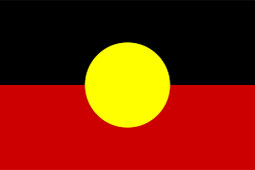What are haemorrhoids?
Haemorrhoids are a network of small blood vessels located at the upper part of the anus. All of us are born with haemorrhoids, and they play an important role in faecal continence. Haemorrhoids are held in their place by a series of complex connective tissue. However due to multiple reasons, the haemorrhoids can become enlarged and cause symptoms.
Some common causes of enlarged or inflamed haemorrhoids include:
- Constipation and straining
- Coughing
- Heavy lifting
- Pregnancy and post-birth
- Age
- Sitting on the toilet for long periods of time (on smartphones!!)
What symptoms do haemorrhoids cause?
- Haemorrhoids are usually painless unless they become inflamed or thrombosed (affected by thrombosis)
- They usually cause painless bleeding which can be seen on the toilet paper upon wiping. Most patients associate this bleeding with firm stools.
- When enlarged, haemorrhoids can prolapse (stick outside the bottom).
- Occasionally, enlarged haemorrhoids can cause difficulty when pushing out the stool, and the patient may also find mucus discharge.
- Any bleeding is of concern. Dr Ganesh will discuss this with you and recommend whether you need a colonoscopy or flexible sigmoidoscopy (short colonoscopy) depending on your age and other risk factors for bowel cancer.
How is an open/LigaSure haemorrhoidectomy performed?
An open haemorrhoidectomy or a LigaSure (a surgical energy device) haemorrhoidectomy is reserved only for large grade 4 haemorrhoids. Dr. Ganesh would recommend this procedure based upon examination in his office or during a colonoscopy.
Open haemorrhoidectomies are performed either as day surgeries or overnight stays. Unfortunately, this procedure is typically associated with pain for at least 1-2 weeks post procedure. Dr. Ganesh will provide you with instructions on how to minimise this pain.
The surgery is performed under general anaesthetic. Occasionally, the surgery can be performed under a spinal anaesthetic. This would be recommended by the anaesthetist on the day of the surgery if necessary. You will have an enema (liquid inserted into the anus) 1-2 hours prior to surgery to evacuate the faeces in the lower part of the rectum and anus. The largest haemorrhoids are cut out using either a LigaSure energy device or diathermy (cauterisation). Great care is taken to isolate and protect the sphincter’s muscles and leave adequate skin between each haemorrhoid pedicle (tissue stem). If there are very large circumferential haemorrhoids, the largest one will be removed to ensure there is enough skin. Usually, local anaesthetic is inserted on either side which will last up to 18 hours. A small pack is placed inside the anus with a pad layered over the passage to stop any further ooze. The pack will either dissolve or be passed out with the first bowel motion.
Patients will usually be discharged with the following:
- Pain relief tablets that do not cause constipation
- Laxatives to keep stools soft
- Local anaesthetic tube
- An antibiotic called Metronidazole which will also help to relieve pain. This antibiotic may cause nausea, or you might experience a metallic taste in your mouth. Metronidazole can also interact with alcohol, which is why we recommend you abstain from consuming alcohol for the first five days following your procedure.
Post operative care after surgery
Patients will usually be discharged the day following their procedure. You will be provided with post operative instructions upon your discharge. You will have a follow up appointment for six weeks post surgery made with Dr. Ganesh in his rooms.
It is important that you keep your stools soft to avoid excessive pain. Regular paracetamol used alongside stronger pain killers such as Palaexia will help. After a bowel movement, we recommend that you implement the following suggestions to minimise the severity of the pain.
- Place your bottom in a sitz bath filled with warm water and salt or else running water in the shower to reduce the intensity of the pain.
- Wipe gently with toilet paper or baby wipes to reduce trauma.
- Apply small amounts of local anaesthetic ointment (this will be given to you upon discharge) over the surface of the anus.
- Place a rolled pack over the anus, held in place with tight underwear.
- Placing ice cubes in a zip lock bag wrapped in a thin cloth may give temporary relief. Usually, the first and second weeks are the hardest.
Bleeding
There will be bleeding in the first few days after your surgery. This bleeding may reoccur about 7-10 days post procedure. It is common that there may be some form of bleeding for up to a month following your haemorrhoidectomy. As there is an open wound, you will likely experience the discharge of small amounts of mucus or “sweat” for a few weeks.
Bowel movements
Soft bowel movements are ideal in this stage of healing. Bowel movements should also not be too frequent as this can increase irritation and discomfort. In the initial aftermath of your procedure, the faeces may be smaller than normal. This is due to the swelling caused by surgery.
Swelling/skin tags
It is common for the skin to swell up initially following your surgery. It may feel as if the haemorrhoids have returned again. This will usually settle with time. Large skin tags will be removed during the procedure only if there is enough skin between each incision.
Activities
There are no restrictions in the activities you wish to participate in after your procedure. However, we do recommend that you avoid any strenuous exercise in your first week of recovery and refrain from heavy lifting for at least two weeks.
Diet
A diet high in fibre along with an increased water intake is recommended to ensure that your stools remain soft as you heal. You should be aiming for 6-8 glasses of water a day.
Passage of urine
Occasionally, the passage of urine can be disrupted by the surgery and the placement of local anaesthetic. Rarely, an indwelling catheter may be placed while in hospital if there is prolonged urine retention.
Please contact my rooms on 08 81646727 or go directly to the nearest emergency department if you begin to experience the following:
- Prolonged or profuse bleeding or passing of clots. (If this occurs, try to apply firm pressure to the area)
- You experience nausea and vomiting which does not settle/persists beyond 4-6 hours.
- You experience fever or chills and sweating
- You have a temperature above 38° Celsius
- Anal discharge is increasing, purulent or offensive
- There is worsening or spreading anal pain; you may have developed an anal fissure.






